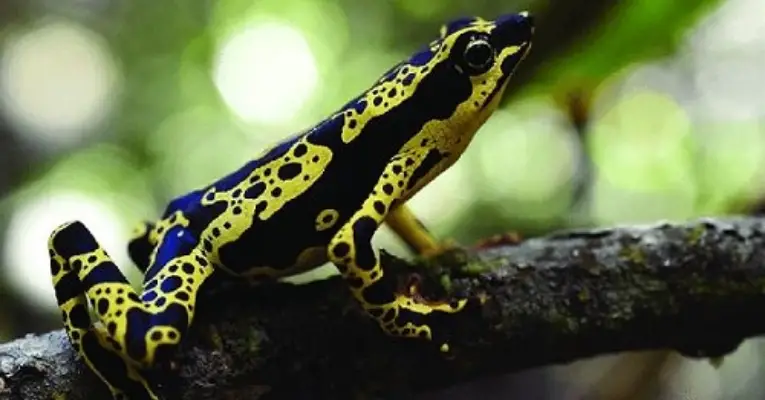Animals
Rare Endangered Frog Seen for the First Time Since Disappearing in 1871

A student at Ikiam University in Ecuador, located in the heart of the Amazon in the province of Napo, has captured imagery of a rare frog that hasn’t been seen in the area for 150 years and belongs to the International Union for Conservation of Nature (IUCN) Red List of species in danger of extinction.
The images, which were posted by the college on Twitter and quickly spread across Latin American social media, note that the rare amphibian belongs to the Atelopus spumarius species—or Pebas Stubfoot Toad—that was last described in written literature as being encountered way back in 1871.
Ikiam University noted that the amphibian is threatened by extinction and its sudden reappearance has surprised residents in the area surrounding the dense canopy jungle where the amphibian lives.
The species belongs to the genus Atelopus, whose members are commonly known as harlequin frogs and live in the Amazonian rainforests of Brazil, Colombia, Ecuador, Peru, and the Guianas.
Una estudiante de #Ikiam acaba de hacer un registro de una Atelopus spumarius, el primero para la provincia de #Napo en casi 150 años desde que fue descrito por Cope en 1871. Es una especie considerada en peligro de extinción pic.twitter.com/Nn1NHb5FxY
— Ikiam (@u_ikiam) April 27, 2019
The land-dwelling species normally makes its home along streams in the forests of the Amazon. Due to the loss of its natural habitat to large-scale mining by transnational mineral extraction corporations, the creature is included on the IUCN Red List of threatened species, which is considered the most comprehensive inventory of the current state of animal and plant species worldwide.
Under President Lenin Moreno, Ecuador has pushed to grant new concessions to international mining firms, alarming conservationists who focus on the heavy impact of mining on countries along the Amazon Basin. The pressure to crack open the wealth in the Ecuadorean Amazon has also angered locals, who argue that large-scale mining violates the government’s social contract with indigenous communities and violates Ecuador’s constitution, which is unique in the region insofar as it grants key rights to nature.
The frog also faces a dire threat from chytridiomycosis, an infectious flesh-eating disease described as the “deadliest in all time.” Thanks to humans, it has become the zoological equivalent of a global pandemic and has spread worldwide. The disease, caused by the fungi Batrachochytrium dendrobatidis and B. salamandrivorans, affects a wide range of amphibians such as frogs, toads, newts and salamanders. The disease has led to the complete extinction of 90 species across the world and the dramatic decline of populations in 411 other species from Oceania to the Americas.
There are about 600 identified amphibian species in Ecuador, and around 20 percent or more remain undescribed, according to Luis Coloma, director of the Jambatu Center for Research and Conservation of Amphibians in Ecuador.
Typos, corrections and/or news tips? Email us at Contact@TheMindUnleashed.com
